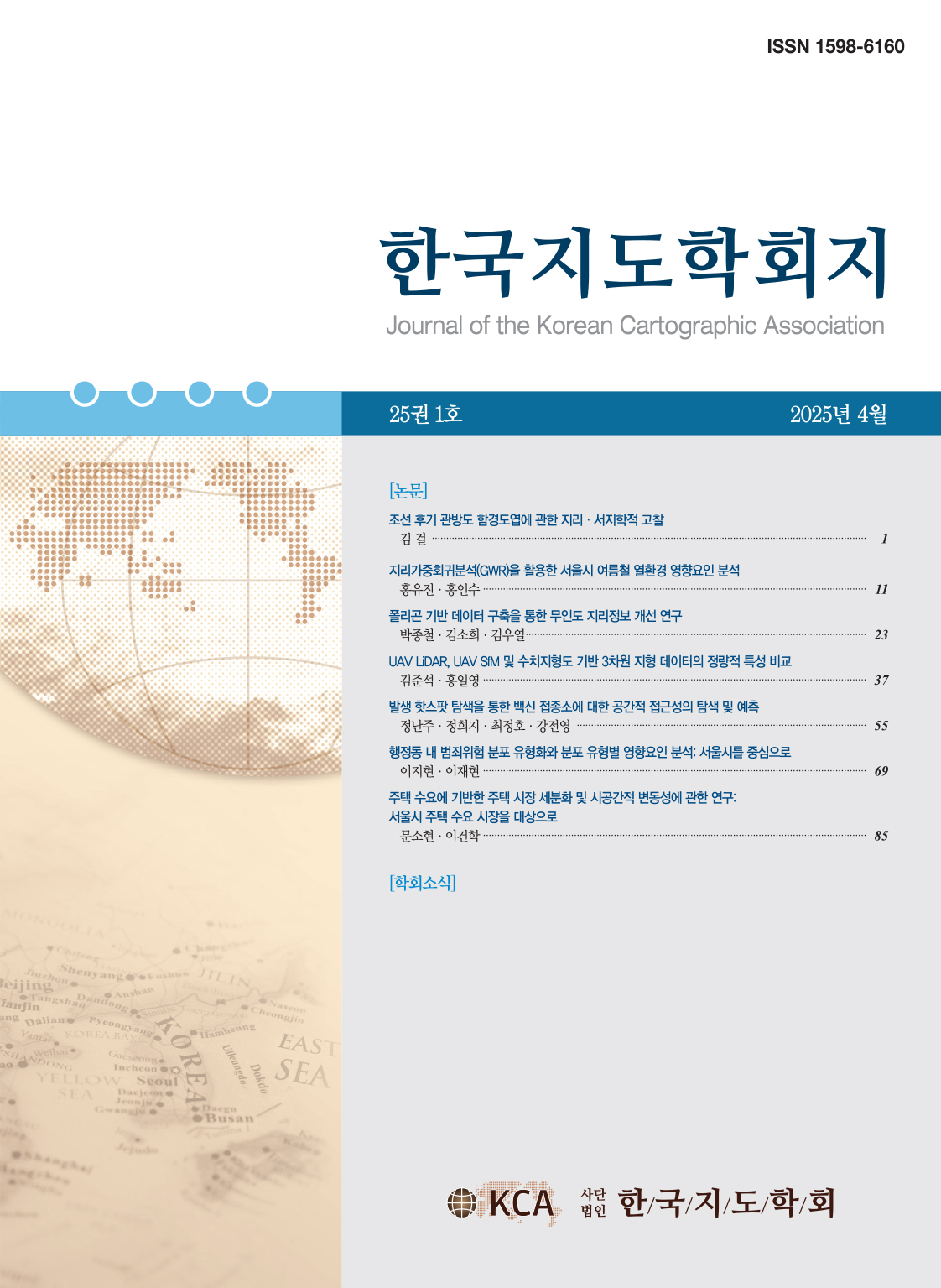Research Article
Abstract
References
Information
Apportionment in property valuation is to separate the market value into multiple parts. This paper aims to propose an apportionment method for single-residential houses utilizing sales price data accumulated nationwide for one year period and to discuss the applications of the resulting apportioned value tables. In order to do so, this paper reviews current practices and prior research, and then selects a building residual method for apportionment. Land value is defined as the market value where the site is cleared and fully serviced, and the value of the each site where houses are located is assesed from a computer-aided mass appraisal system that utilizes land sales prices collected nationwide as well. As a result, multiple corsstab tables are produced to report the apportioned values between land and building of single-residential houses that are categorized by building uses, regions, building structures, and years after construction. It is confirmed that the tables provide auxillary information that is useful to understand the structure of the value of the single-residential houses.
토지・건물 배분비율은 부동산의 일괄가격에 대한 토지가격과 건물가격의 구성비율을 의미하는데, 과세표준 산정 및 법원 경매 등 행정 목적으로 활용한다. 본 연구는 단독주택의 실거래가를 기반으로 토지・건물 배분비율을 구하는 방안을 제시하고 그 결과의 활용성을 제시하는 것이 목적이다. 이를 위해서 토지・건물 배분비율에 관한 현행 적용방식과 관련된 선행연구를 검토한 후 가격 배분 모형을 선정하였다. 선정된 모형은 단독주택 실거래 가격에서 토지가격을 공제하는 방식이다. 모형에 투입될 단가 추정을 위해 단독주택 실거래 매매 자료를 분석하여 토지와 건물 가치 비중과 건물의 단가를 산출하였다. 이때 토지가격은 실거래가와 관련된 다량의 정보를 종합하여 산정한 가격이고, 건물가격은 단독주택 매매가에서 토지가격을 차감한 값이다. 모형에서 산출된 결과를 기반으로 단독주택가격의 토지・건물 배분비율표와 건물단가표를 건물용도별, 지역별, 건물구조별로 세분하여 작성하고 상관관계의 변화 특성을 탐색하였다. 이를 통해 배분비율 자료는 기존에는 얻지 못하는 건물과 토지 가격의 특성에 관한 추가정보를 획득할 수 있는 유용한 보조자료로 활용할 수 있다는 점을 확인하였다.
- 권영선, 2015, “단독주택가격 토지·건물 배분비율을 활용한 공시지가 현실화율 제고방안 연구,” 한국지적학회지, 31(3), 165-175.
- 김옥연, 2006, “공시주택 평가의 문제점 및 개선방안,” 경기대학교 석사학위 논문.
- 김감영, 2017, “아파트 매매가격 변동의 시공간적 역동성 탐색,” 한국지도학회지, 17(2), 45-62. 10.16879/jkca.2017.17.2.045
- 김소연·김영호, 2013, “주거지 인문환경의 공간속성을 고려한 주택 가격 결정 모형: 서울시 아파트를 대상으로,” 한국지도학회지, 13(3), 41-56.
- 김종근·주승민, 2016, 층별 효용비율을 통한 상권 특성 분석과 동향 탐색, 한국지도학회지, 16(2), 105-114. 10.16879/jkca.2016.16.2.105
- 김태훈·정수연·박홍희, 2004, 「집합건물 구분평가시 토지·건물 배분비율에 관한 연구」, 서울: 한국부동산연구원.
- 심재복, 2007, “단독주택 토지가격의 평가 적정성 실태분석,” 감정평가학 논집, 6(2), 28-50.
- 이성원·주용범, 2007, “법원경매평가에서의 비주거용 집합건물 구분평가시 토지·건물 배분비율에 관한 연구,” 부동산연구, 17(2), 55-71.
- 임재만·이재우·정수연·김수정·구교연·김준영, 2015, 「서울시 개별주택 공시가격의 합리적 개선방안 연구」, 서울: 서울특별시.
- 주용범·이성원, 2009, “단독주택 구분평가시 토지·건물 배분비율에 관한 연구”, 부동산연구 19(1), 151-172.
- 채미옥·정희웅·조윤제·김은지·김한수, 2016, “단독주택 공시가격 산정방법 개선방안 연구,” 부동산분석, 2(2), 1-22.10.30902/jrea.2016.2.2.1
- 한국감정원, 2014, 「비주거용 집합부동산가격 토지·건물 배분비율에 관한 연구」, 대구: 한국감정원.
- 한국감정평가협회, 1993, “집합건물 구분평가시 토지ㆍ건물 배분비율에 관한 지침”, 서울: 한국감정평가협회
- Appraisal Institute, 2007, The Appraisal of Real Estate, 12th ed., Chicago.
- Hendriks, D., 2005, Apportionment in property valuation: should we separate the inseparable?, Journal of Property Investment & Finance, 23(5), 455-470.10.1108/14635780510616043
- 건축행정시스템, http://cloud.eais.go.kr.
- 국가공간정보포털, http://www.nsdi.go.kr.
- 부동산거래관리시스템, http://rtms.molit.go.kr
- Publisher :The Korean Cartographic Association
- Publisher(Ko) :한국지도학회
- Journal Title :Journal of the Korean Cartographic Association
- Journal Title(Ko) :한국지도학회지
- Volume : 20
- No :2
- Pages :57-69
- DOI :https://doi.org/10.16879/jkca.2020.20.2.057



 Journal of the Korean Cartographic Association
Journal of the Korean Cartographic Association





